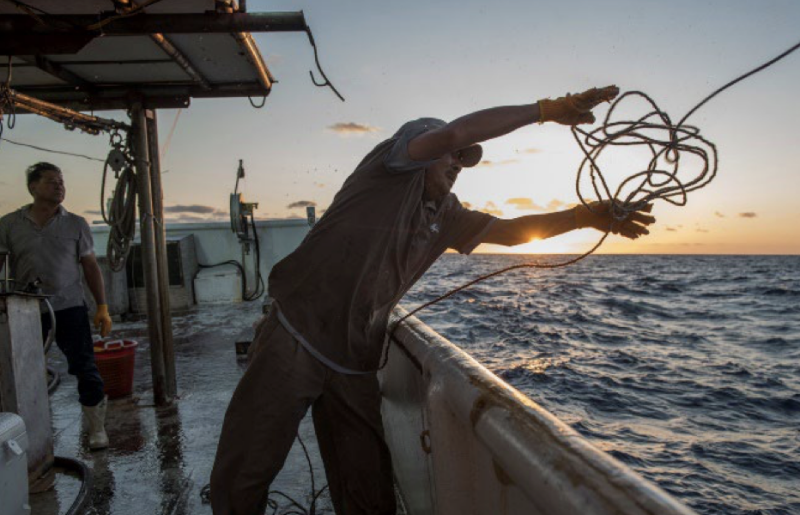The National Seafood Strategy report from National Oceanic and Atmospheric focuses on climate change, global market disruptions and new ocean uses like offshore wind energy.
The paper outlines four goals. At the top, it ranks “maintain or increase sustainable U.S. wild capture production.”
Climate shifts are forcing fish populations to gradually move – such as the decline in Mid-Atlantic lobster and northward shift of black sea bass into New England waters. Ocean “heat waves” of higher water temperatures and bigger storms “are affecting access to fishing opportunities, production of seafood, and fishing to support local dietary needs, cultural traditions and tribal treaty rights,” according to a NOAA summary of the plan.
The report ranks its second goal as increasing “sustainable U.S. aquaculture production.”
“Supporting diverse and regionally-appropriate growth of the domestic aquaculture industry will depend on an efficient, strategic, and science-based regulatory approach that considers and mitigates impacts on protected resources, essential fish habitat, and marine ecosystems,” according to the paper.
Key steps to building up aquaculture will require “marine aquaculture management and regulatory efficiency” that speeds up implementing “an efficient, predictable, timely, and science-based regulatory framework for marine aquaculture,” the report says.
“Science-based advice and tools” are needed to minimize potential effects of aquaculture operations on the coastal environment, and “conduct coordinated, applied scientific research in support of sustainable industry development.”
The third goal to boost “access to domestic and global markets for the U.S. seafood industry” includes the traditional government emphasis on communication and promotion of seafood, with an additional emphasis on reaching American consumers who now have less access to fish in their diet.
Fair trade is part of that goal too, by having the U.S. fight when it can against illegal and unregulated foreign fishing practices and expanding access in markets for U.S. seafood.
The plan’s fourth goal is defined as “strengthen the entire U.S. seafood sector.” With the fishing industry’s overall opposition to the government drive promoting offshore wind energy projects, the NOAA paper refers only tangentially to “a changing ocean economy.”
“Climate change, the covid-19 market disruptions, and new ocean uses are highlighting systemic challenges to the U.S. seafood industry and the importance of supporting the entire seafood/fisheries value chain, including after seafood hits the docks. Addressing these challenges will help the seafood industry to rebuild more quickly and enable the industry to be more resilient and flexible in the face of potential future crises and market shocks.”







